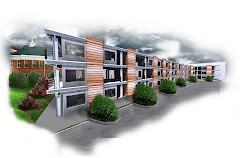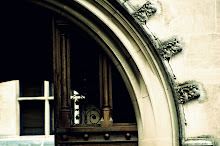I found these articles to be interesting and very informative. While the article, “The Pioneers of Digital Art” focuses more on technology’s influence on the art world, “Computing in Architectural Design” discusses technology’s influence from a more scientific standpoint. Technology began as a tool for designers to engineer and analyze buildings’ structures and more functional aspects. This allowed for the more practical aspects of design to become a quicker and easier process, while the aesthetics and more creative processes were still done manually by the architect. In this way, although technology made the process more efficient, it was not such a large step from the manipulation of geometric forms that architects had worked with for centuries before. I found myself wondering how technology has taken us so far, and yet we still marvel at the strides that were taken with the creation of the pyramids and Stonehenge. In today’s world, technology is not a solution that negates the necessity of an architect, rather it is an alternative, or collaborative tool that comes with its’ own benefits and drawbacks.
On this note, I can’t say that I agree with the approach to create a computer system that could perform all the tasks that are employed by the architect. Although computer systems have become highly intelligent, I believe they belong as a tool, more so than anything else. The backbone of design is the creativity and vision of the designer, one that cannot be “programmed.” Technology provides us with a useful tool for generalized design, and aids us with certain types of problem solving, but is not able to perform as a designer would in situations that require more creative solutions. I do enjoy the ability to go beyond traditional mediums. We now have the ability to paint three dimensions, to capture the Aurora Borealis and turn it on and off with the click of a button. Technology has provided a space where collaboration among mixed professions is possible. Not only is collaboration possible, in small communities as well as globally, but it has expanded the horizon for interactive exploration. With the creation of virtual reality, and 3D generation, we can not only explore our own world but possibilities beyond our universe.
With the ability to design globally from the comfort of our own home, it begs the question, “What about our awareness, as designers, of context?” Technology is an amazing means of communication. Now that we can video chat with those from different cultures and countries, we do not have to travel to collaborate on a project. But this prevents us from experiencing the environment for which we are designing, and may result in a structure that feels out of place. At the same time, improved communication ensures a smoother design process which makes the design more enjoyable for many. Cyberspace has enabled us to create an almost tangible resource to science’s most amazing phenomena; access to more sources of inspiration and innovation than were ever possible before, and connects us in some ways to much larger communities of artists, designers, and creative thinkers everywhere
With the creation of this new cyberspace, and the creation of a new “environment, it instigates the discussion of cyber “space.” The necessity to create within the computer forces the issue of the computational environment. This can be unrealistic, and deceiving, but it also provides the ability to make changes within mere seconds, which allows for more time allocated to the creative side of design. A question that comes to mind when considering the future of this new cyberspace would be whether this technology will void the need for any physical sort of architecture, aside from a simple roof over your head. With the ability to wrap structures with virtual landscapes and virtual rooms, environments, etc., might we someday end up existing in simple structures with virtual facades? There would no longer be costly renovations, or the need to repaint, to change the outward appearance of a house. An individual may purchase an entire room online for download, and create their own furniture online as well.
In my opinion, technology will continue to increase our ability to visualize what does not exist. Although without the ability to predict the future, the use of technology will only ever be able to show “possibilities, rather than achievements,” short of digital renderings of existing structures. This tool will always be imperative for the design of interiors. In a culture where we are more and more concerned about expenditures, the ability to see what you are getting will enable designers to provide more control over the design process to their clients. This, in turn, will help to eliminate costly mistakes and misunderstandings. Designers will be better able to communicate with contractors, architects, and engineers their visions and a better compromise between aesthetics and functionality will occur. In addition to this, technology will continue to make what may have been incredibly difficult or even impossible, possible and easier to accomplish too. Frank Ghery’s work is a perfect example of architecture that would have been formidably difficult without the creation of technology.
I would also venture to say that it will continue to play the role as the designer’s assistant. I think it will continue to provide us with a way to visualize a new space, as well as possibilities in many different venues. The relationship between designer and technology will become increasingly intimate, in that individuals may actually interact in the cyberspace on a more personal level. Today we have the ability to draw virtual furniture within a physical space and have it translated into a physical product. The overlap between our physical world and our virtual one will continue to grow as we push the boundaries.
Sunday, January 24, 2010
Subscribe to:
Post Comments (Atom)



No comments:
Post a Comment